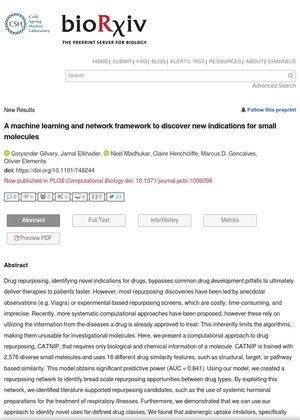A Machine Learning and Network Framework to Discover New Indications for Small Molecules
August 2019
in “
bioRxiv (Cold Spring Harbor Laboratory)
”

TLDR The model successfully predicted new uses for existing drugs, like using certain hormonal and heart medications for respiratory and Parkinson's diseases, and a cancer drug for diabetes.
Four years ago, a computational approach to drug repurposing, CATNIP, was presented. This model, trained with 2,576 diverse small molecules and using 16 different drug similarity features, achieved significant predictive power (AUC = 0.841). It was used to create a repurposing network to identify broad scale repurposing opportunities between drug types. The model identified literature-supported repurposing candidates, such as the use of systemic hormonal preparations for respiratory illnesses. It also found potential new uses for defined drug classes, such as adrenergic uptake inhibitors, specifically amitriptyline and trimipramine, for Parkinson’s disease, and the kinase inhibitor, vandetanib, for Type 2 Diabetes. This systematic approach aimed to streamline future drug development efforts.

